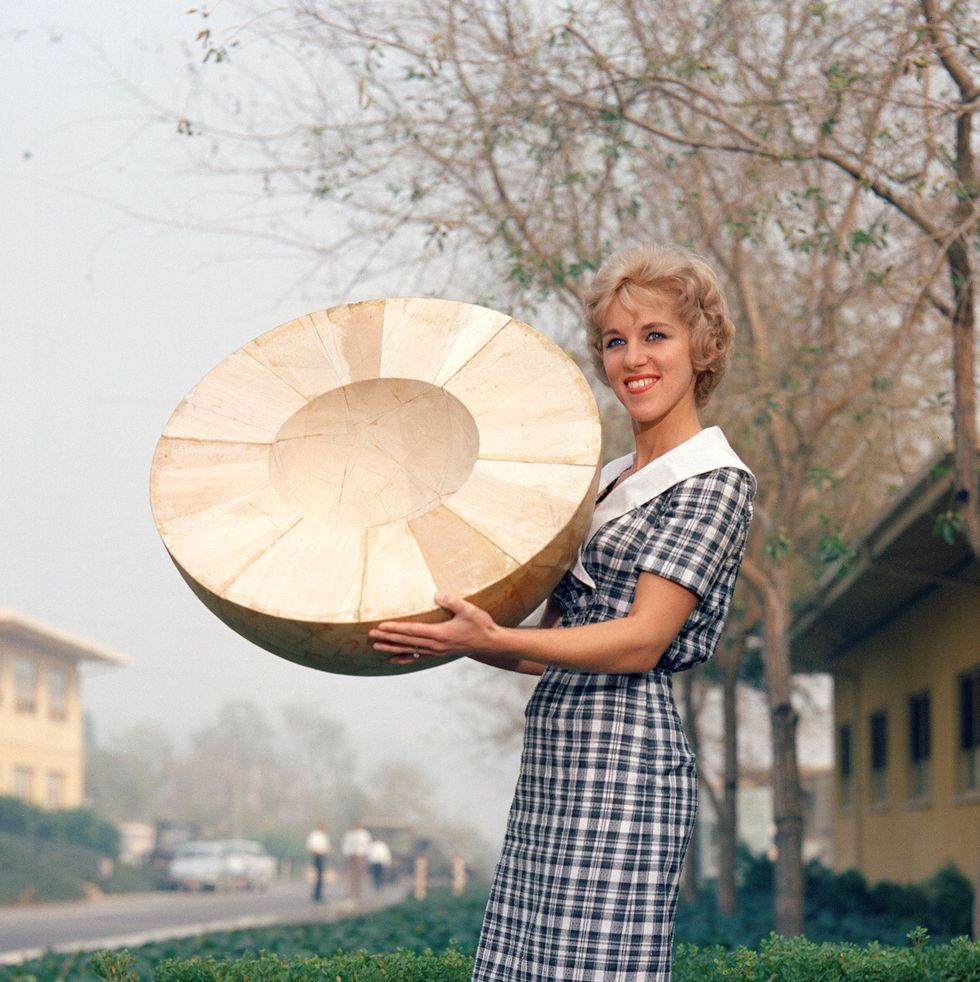What a proposed wooden satellite could (and could not) accomplish.
A strange satellite proposal made at the end of 2020 by a Japanese company had many space pundits scratching their heads into 2021.
The proposal came out of Kyoto University in partnership with Sumitomo Forestry in Japan, though most of the information on the project comes from a BBC post quoting Japanese Aerospace Exploration Agency (JAXA) astronaut and Kyoto University professor Takao Doi, who flew aboard the U.S. space shuttle on missions STS-87 and STS-123 to the International Space Station. STS-123 delivered and installed JAXA's Kib? module in 2008.
The idea is the design a wooden satellite, as an alternative to traditional construction materials. Though this curious idea seems like a step backward in the modern Space Age, wood actually has many preferable qualities as a lightweight but durable construction material. The idea of a 'WoodSat' as an answer to the growing problem of space debris in low Earth orbit has, however come under fire as the story made its rounds over the past week.
What a Wooden Satellite Would (and Wouldn't) Address
To be sure, a wooden satellite would not address the problem of space junk in Earth orbit… or at least, not in the way that you'd think, or in the way that many news outlets are currently re-reporting. U.S. Combined Space Operations Center Space-Track currently catalogs over 47,000 objects in low Earth orbit, from active satellites, to discarded rocket boosters, to tiny shards of debris down to a centimeter in size. Millions of tinier artificial micro-meteoroids are estimated to exist in LEO, and these objects periodically 'sandblast' satellites and spacecraft, including the International Space Station. A 2020 study suggests that we know even less about the artificial debris population in high Earth orbit.
The trouble is, all of that junk in LEO is still whizzing along at about 7.8 kilometers per second, be it metal, plastic or wood... and that velocity will still pack quite a punch, regardless of what the speeding particle is made of.
How about addressing satellite reentry and atmospheric contamination? At first, the idea of a wooden satellite that would simply disintegrate on reentry seems like a good idea… after all, satellites incorporate lots of exotic compounds and rare earth metals, right? Well unfortunately, making the frame out of wood (a poor electronic conductor and essentially a carbon compound) won't really change things, as the electronics inside will still need to be made of conductive compounds. Plus, lots of the problematic compounds that head back to Earth are toxic (think hydrazine fuel aboard the failed Phobos-Grunt mission in 2011-2012), and very occasionally radioactive and nuclear power plants. Radioactive reentries are a rarity these days but have occurred in the past, such as the Lunar Module-turned-lifeboat Aquarius on Apollo 13, and the reentry of Kosmos 954 over the Canadian Arctic in 1978.
Hundreds of reentries occur on the average year, but even if they were all made of wood, that's still a trickle compared to the 15,000 tons of natural cosmogenous material striking the Earth every year.
Is there any practical use for 'WoodSat?' Here's one possible plus for a wooden satellite: wood is largely transparent to radio waves, meaning you could keep most of your communications and research antennas internal: no more unfurling bulky instruments after achieving orbit. In fact, 'failure to deploy' once orbit is achieved has doomed many a satellite… and this wouldn't be a problem with WoodSat.
Most wood also contains a variable amount of moisture which would quickly evaporate out into the vacuum of space, leaving porous gaps behind. The wood chosen would also need to exhibit a low thermal expansion, as it would be exposed to high temperature fluctuations. Thus far, the exact composition of the wood that Sumitomo Forestry would use for such a satellite is stated by the company as proprietary, though Takao Doi does cite a study conducted on the exposed portion of the Kib? Laboratory aboard the International Space Station looking at the elasticity of various types of wood when exposed to space.
Has there ever been a satellite incorporating mostly wood before? Yes: the early NASA Ranger missions to the Moon in the 1960s actually incorporated a balsa wood 'impactor limiter' sphere, meant to survive a crash on the lunar surface. Unfortunately, most of those early Rangers either failed shortly after launch, or missed the Moon entirely… one wooden impactor aboard Ranger 4 may have come to rest intact near Ioffe Crater on the lunar farside, but if it did, it never phoned home.
One other interesting idea is to construct a reentry heat-shield out of wood. China actually incorporated this feature using wooden impregnated-white oak heat-shields on its Fanhui Shei Weixing reconnaissance satellites, in a design that reportedly worked quite well.
When might 'WoodSat take to space? Well, for now, Takao Doi and team are looking at fielding an initial design in the coming years, with a launch perhaps by 2023. The design we see in the one mockup released by Sumitomo Forestry looks like it's based on a standard 6U cubesat.
For now, 'Woodsat' remains an interesting possibility, though a more viable solution to the space junk issue is to incorporate disposal features such as drag-sails as standard equipment, enabling satellites to reenter shortly after their useful lives in orbit are concluded.
Lead image credit: A wooden satellite mockup. Sumitomo Forestry.
 Universe Today
Universe Today



